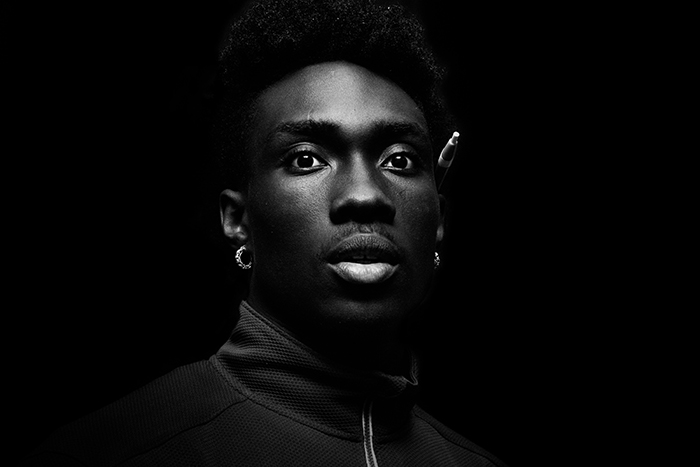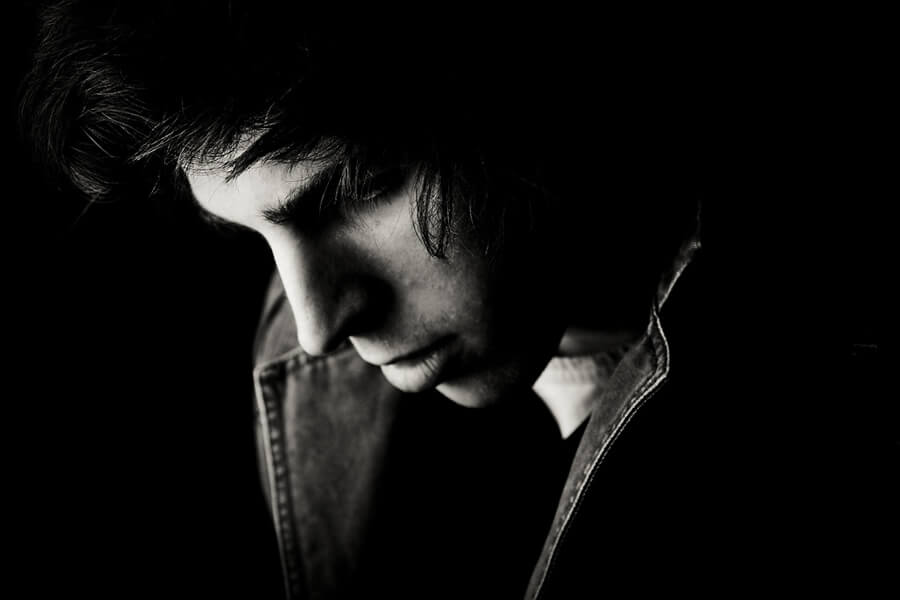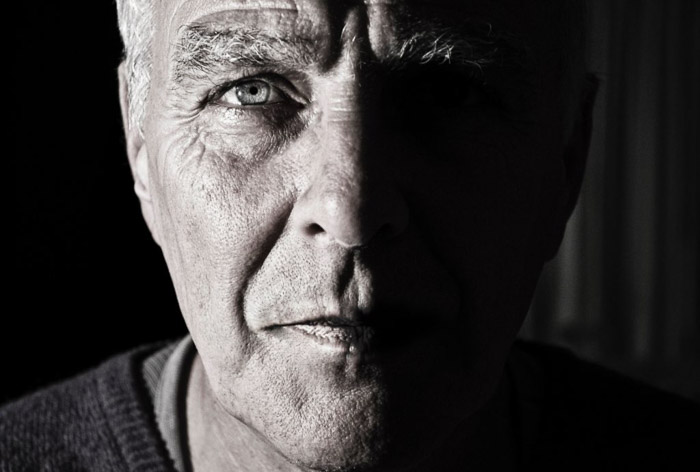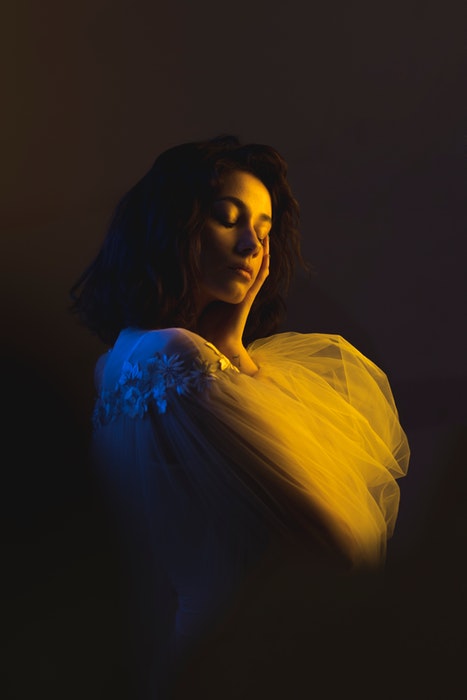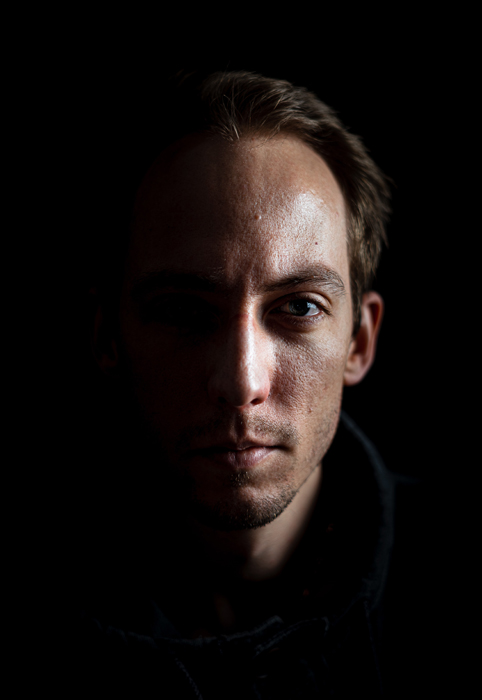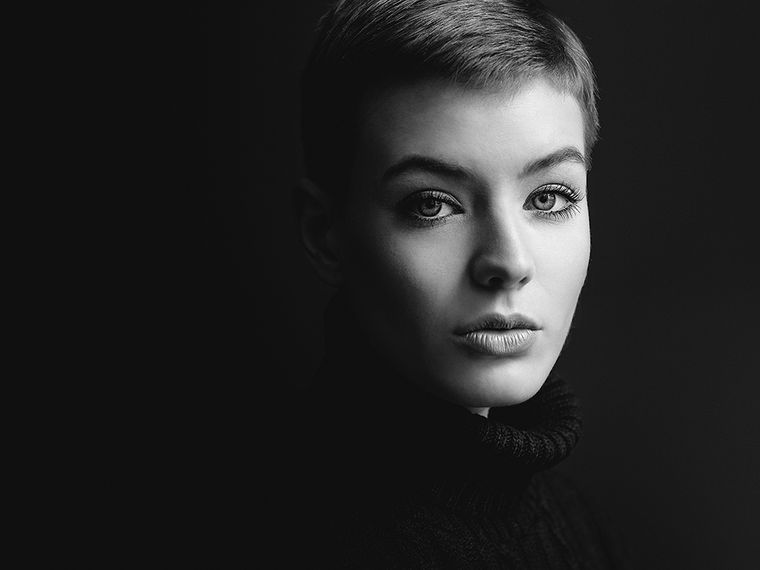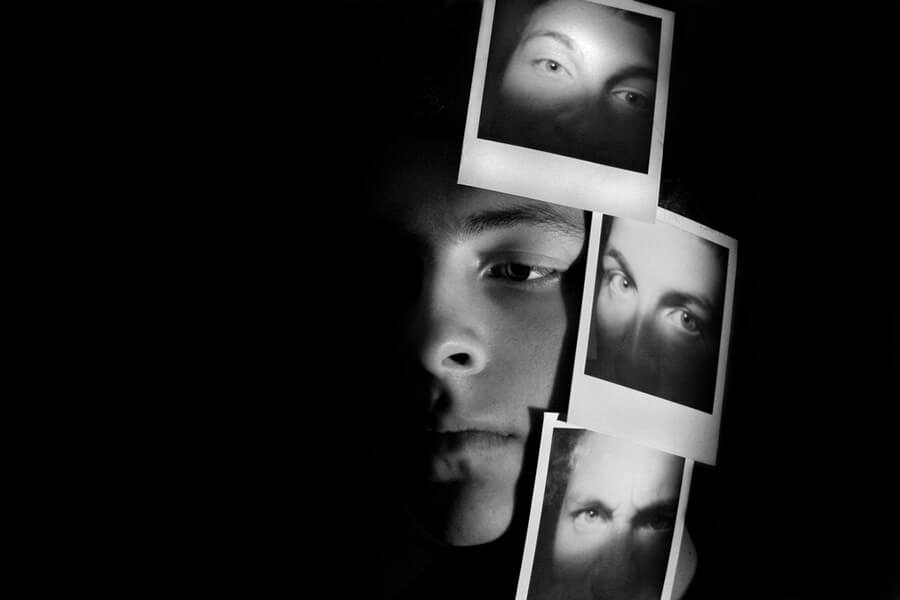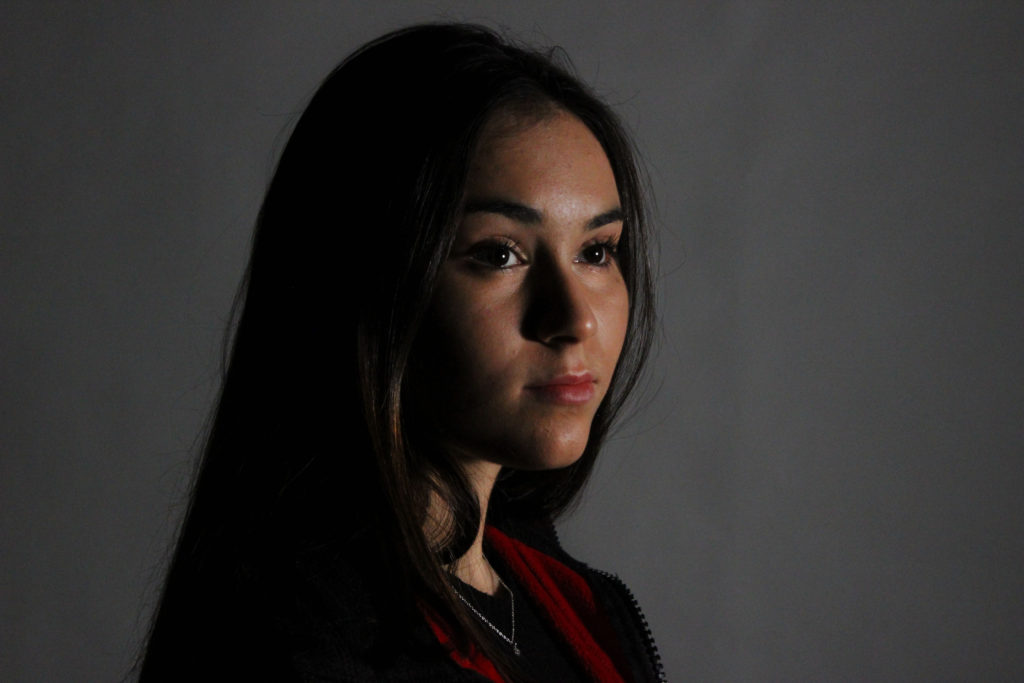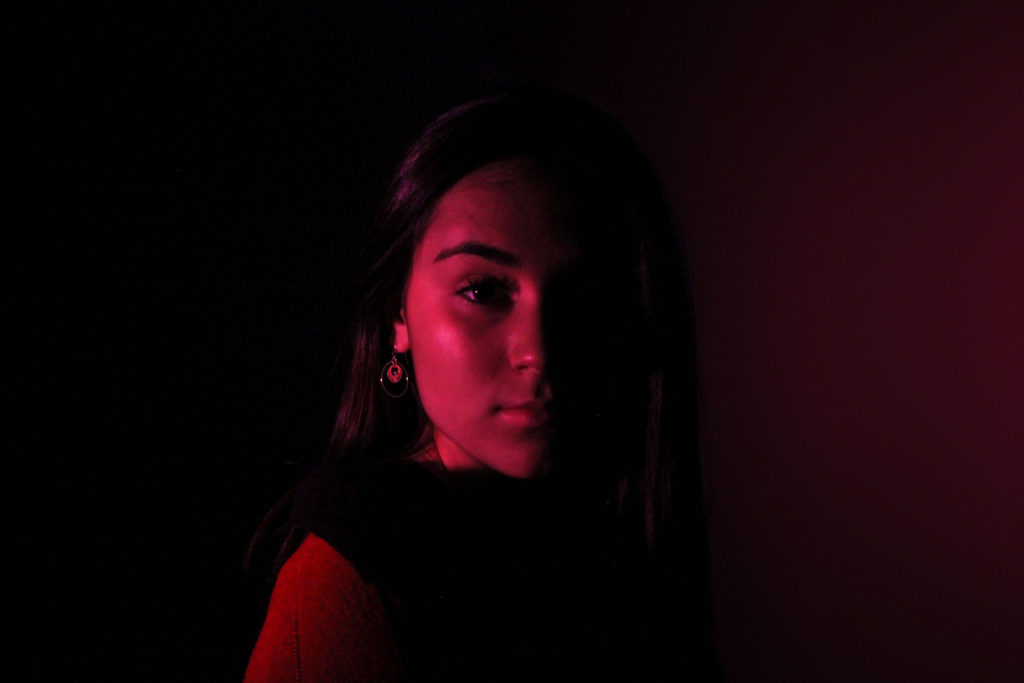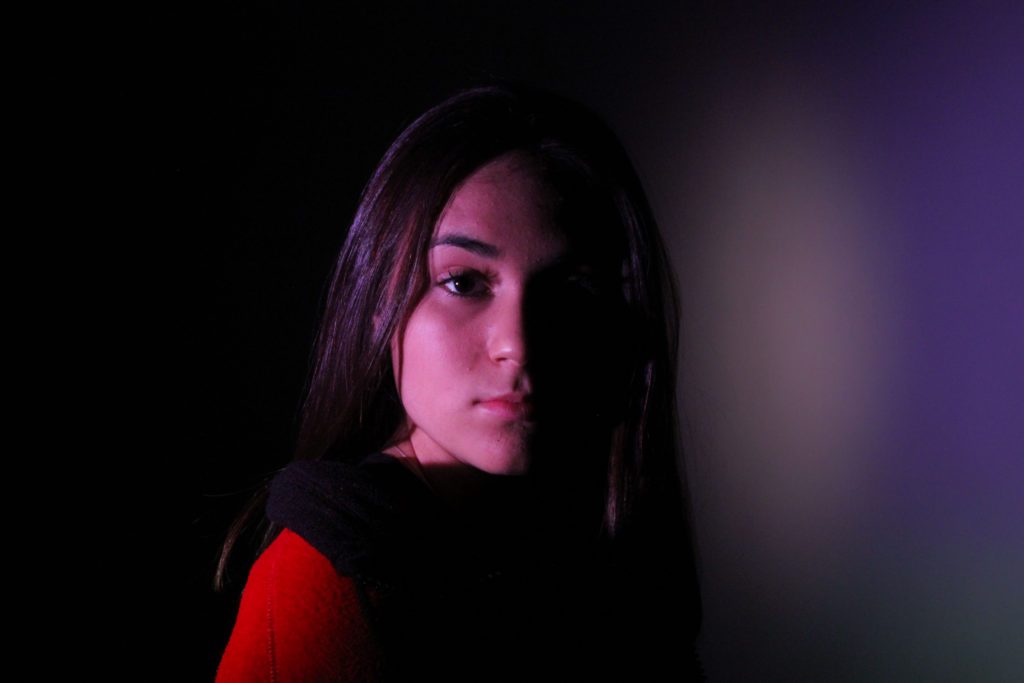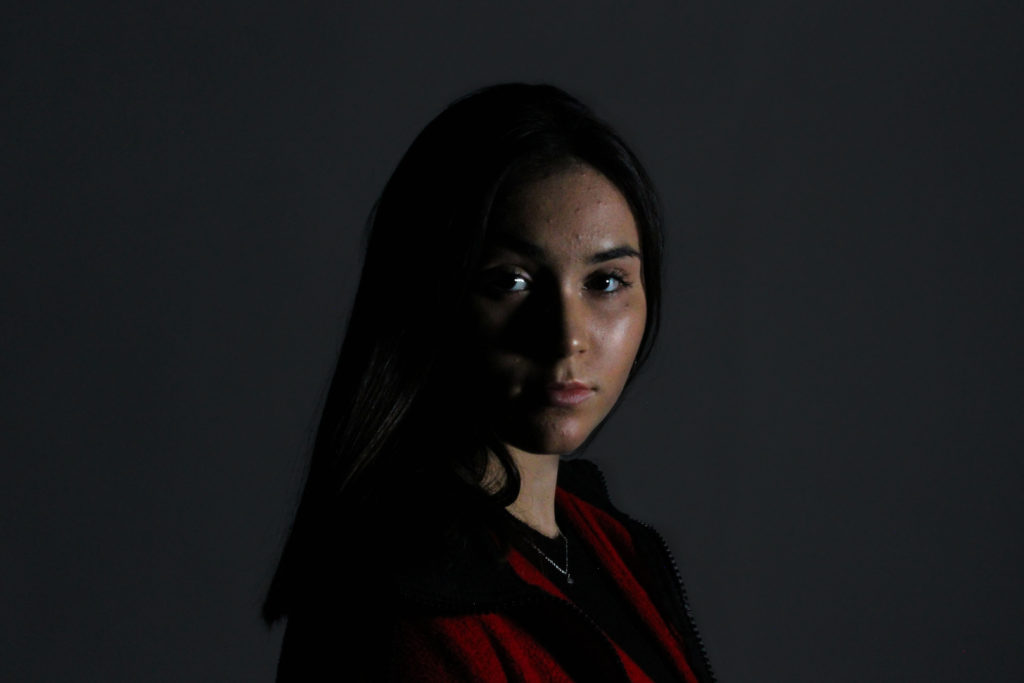The use of artificial lighting offers many creative possibilities such as chiaroscuro, Rembrandt, hard and soft lighting. This can be done through the use of 1 and 2 point lighting. One point lighting is a type of studio portrait, in which only one light source is used to illuminate the subject, resulting in often dark and moody images. On the other hand, two point lighting is a type of studio portrait, in which two light sources are used to illuminate the subject, causing the images to often look clear, professional and shadow-less.
One Point Lighting and Chiaroscuro
Chiaroscuro is an Italian term literally meaning ‘light and dark’, and also is a method of lighting in which the use of contrast and shading is used to produce a composition. This type of lighting was originally showcased and developed to its full potential by artist Leonardo Da Vinci. Artist or photographers often use this technique in order to achieve a dramatic or impactful final image.
Analysis
Peter Lindbergh
Peter Lindbergh was a German fashion photographer, born in 1944, known best for his cinematic photography and being one of the most influential contemporary photographers. Lindbergh first started off his creative career by studying painting at the College of Art in Krefeld. After graduating Lindbergh turned to the medium of photography, later working for Stern Magazine.
Lindbergh was said to set himself apart from other photographers by redefining beauty standards in fashion photography. He did this by not defining the subject in the photographs by their age, and excessively retouching the images to conceal it. Lindbergh believed that photographers should “free women, and finally everyone, from the terror of youth and perfection”.

This black and white image taken by Peter Lindbergh displays a head shot of actress Lupita Nyong’o in one point lighting. By using this method Lindbergh has illuminated the left side of her face while casing a dark shadow on the other. In addition, it can be said that Lindbergh’s use of black and white, instead of colour, accentuates this chiaroscuro lighting and the contrast between light and dark. These contrasting tones also create various angular lines around the image, such as the sharp diagonal shadow line on her neck, which can be said to lead the viewer’s eye towards the focal point of her face. Here Lindbergh has centred Nyong’o in the centre of the image, which allows for almost an even amount of empty space either side of her and the main focus to be on the headshot itself.
Focusing on the technical aspects of this photograph, you can see that Lindbergh has used a fast shutter speed to capture this image, due to the fact that there is little to no blur and it was taken in a dark setting. Furthermore, he has also used a medium to large aperture, as you can see that the background has been given less focus than Nyong’o herself, allowing for a small depth of field. The one point studio lighting for this photograph also means that Lindbergh must have used a high ISO, so that the camera would be more responsive to the little amount of light in the room.
Photo-shoot
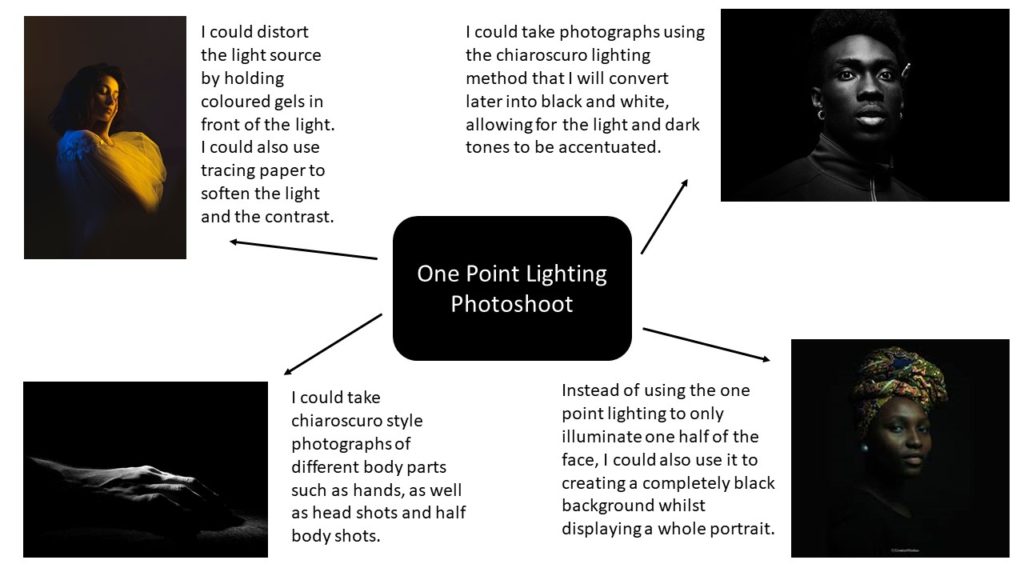
Plan

Contact sheets
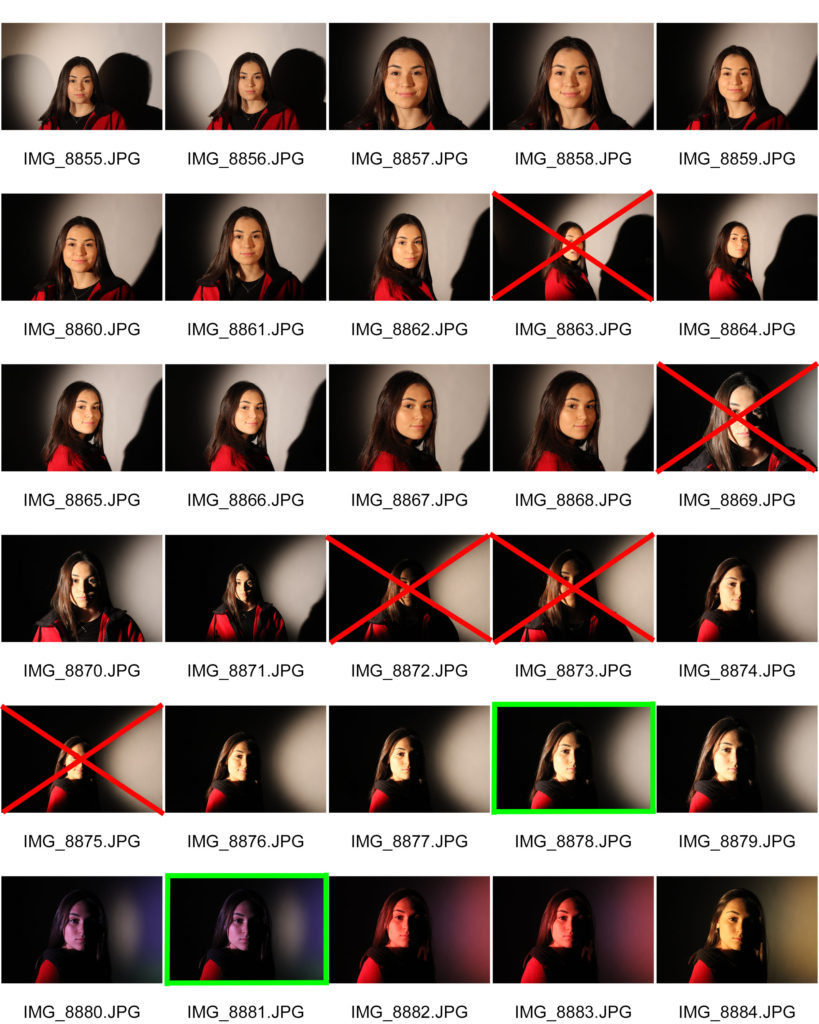
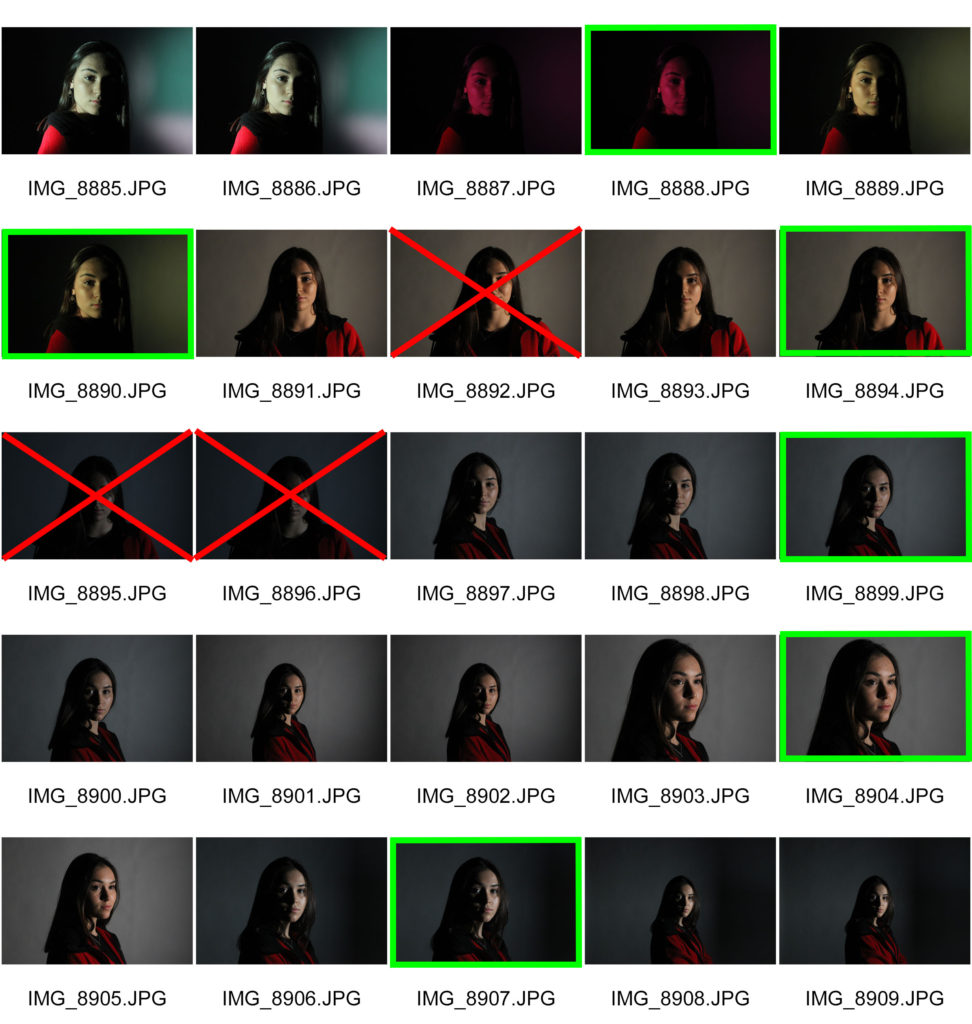
Edited Images
While editing these images I focused mainly on adjusting the exposure and contrast, so that my use of one point lighting would be best displayed. To do this I made sure my images were not too under or over exposed, allowing for a clear and sharp portrait. To further the effects of this type of lighting I increased the contrast on all of my images, in order to get a more dramatic chiaroscuro photograph. I also reduced some of the noise in the background of the images, due to low light.
Final Image
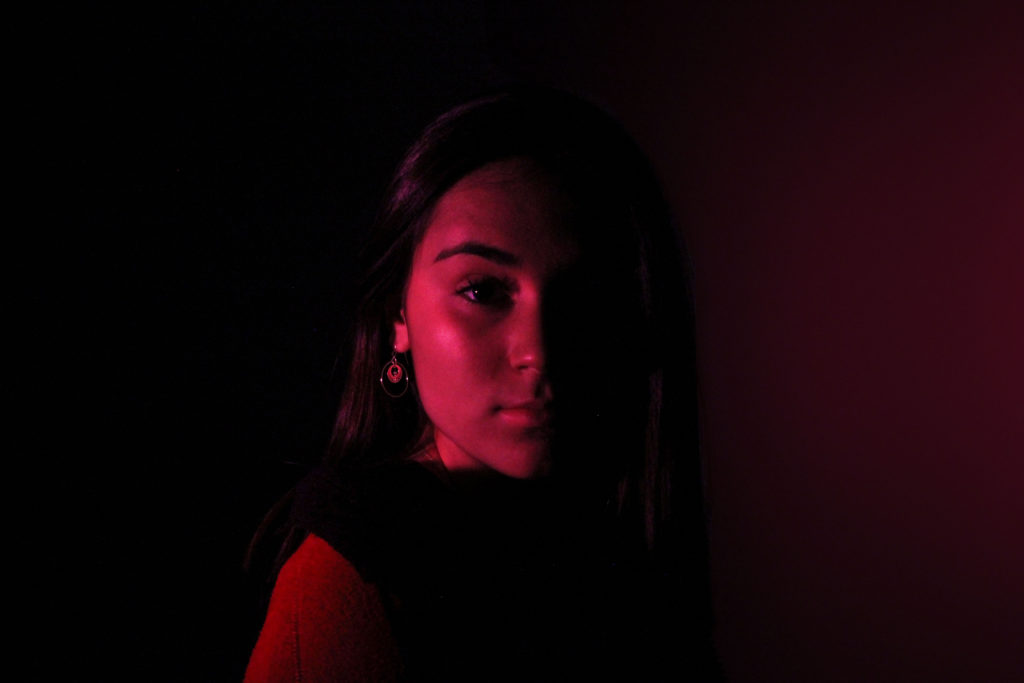
I believe that this is my best image from my studio one point lighting photoshoot, due to the fact that I think it best showcases the technique of chiaroscuro and the contrast between light and dark. In addition, it is also one of my sharpest images and is well centred with a basic background, allowing for the viewers attention to be drawn to the focal point of the subject in the image.

